The Best of Barcelona in 2 Days: Your Self-Guided Walking Tour

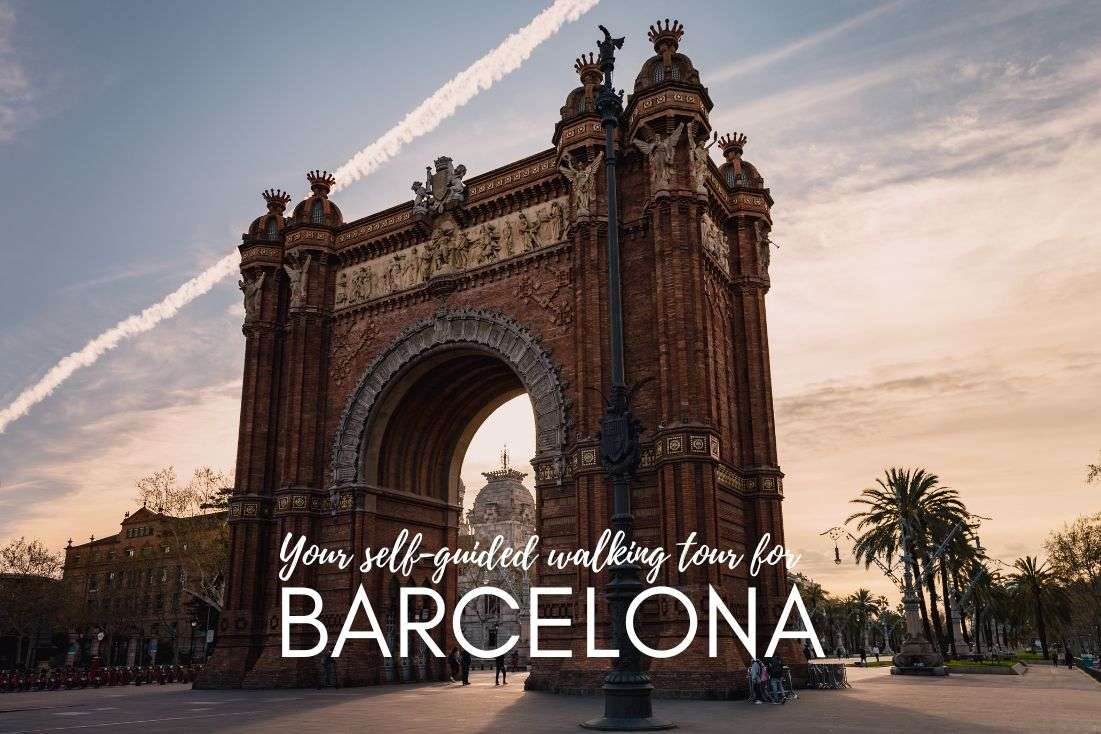
You can easily spend 2 days in the city of cartoonish buildings that look like they’re melting—Barcelona. But be warned, you'll be left wanting more! If you add the beach, the museums and galleries, the restaurants, and the nightlife, you have a bucket list destination like no other! Barcelona has a vibe that is addicting, so even if you keep returning, each trip will be different and always worth it. After my hometown of Prague, Barcelona is my favorite city in Europe.
The self-guided tour I'll be taking you on is perfect for a first-timers trip to Barcelona and focuses on the city's famous architecture, taking you on a walk around the 10 most beautiful sights in the city. Obviously, those melting buildings aren’t the only thing to see, but let’s be honest, Antoni Gaudí helped make Barcelona the epic city that it is.
First, I'll take you through the top places to visit in Barcelona's Gothic quarter and then up to the one and only Sagrada Familia. This will easily fill up one full day in Barcelona.
Then, I'll add two more spots, Parc Güell and Montjuïc Hill. You’ll need another day for those unless you plan to run around Barcelona like a crazy person and have your legs fall off before your evening tapas. Please don't do that, you should be trying to spend more time in Barcelona, not less!
If you are already certain that Barcelona deserves more than 2 days, I won't argue with you. I already put together a 5-day Barcelona itinerary that even includes some day trips, so that bucket list gets crossed off properly.
You might also be interested in reading:
- Andalusia Itinerary: Southern Spain in 10 Days
- Barcelona Itinerary: 5 days in Gaudí’s Metropole (with day trips)
- All You Need to Know about Spanish Tapas (+Restaurant Tips)
- The 10 Best Museums in Spain’s Top Cities
- The 16 Most Beautiful Beaches in Spain
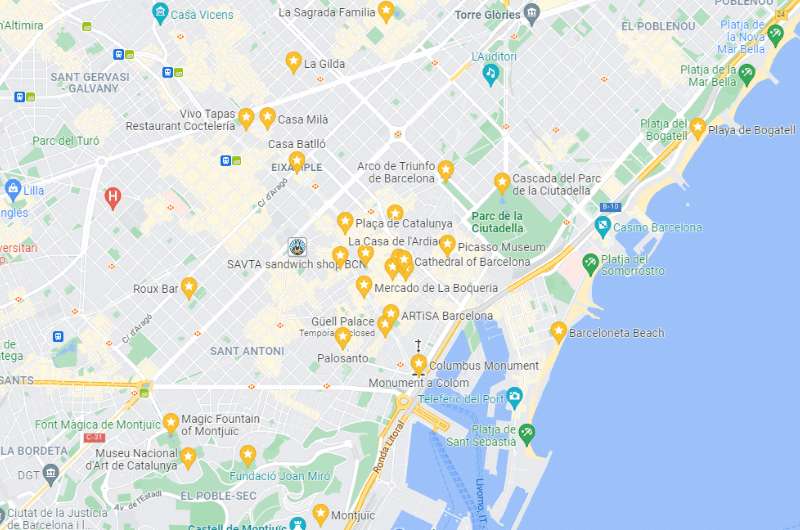
An overview to get your grip on where everything is located for your self-guided tour (Park Guell is off the map to the north)
The Barri Gòtic (Gothic Quarter) is the center of the old town of Barcelona. This is where the streets are narrow and everything is wonderfully old. There is no city grid, unlike in the Eixample area outside of the Gothic Quarter that is full of straight lines and right angles – Gaudi would’ve hated it!
Who was Gaudí?
Before we start the walk, it might be useful to know who this Gaudí person was. When he graduated Barcelona Architecture School, the director said that they have given an academic title to either a fool or a genius. Not a star student, I suppose, but it seems that giving him a title wasn’t a mistake after all. His structures don’t conform to a single style, most often being called a mix of Art Nouveau and Catalan Modernism, but he basically does his own thing and is very fluid.
His style isn’t everyone’s cup of tea, but it is a big cup for sure. You will either love him or hate him, just like Dalí and Picasso did. You can take a guess which of these two fellow Catalans liked Gaudí’s work. Hint: focus on the melting. That’s right, Dalí was a fan, as am I. Gaudí’s one of the top architects in my book.
One of his greatest works, the Basílica de la Sagrada Familia, is still a work in progress after almost 140 years.
Ironically, Gaudí died after being hit by a tram in Barcelona. He dressed like a homeless person, and nobody recognized the famous architect until the day after the accident. By that time, the medical assistance he finally received wasn’t enough to save him.
Now let’s get back to the walking tour:
Barcelona walking tour, day 1, stop 1: Cathedral of Barcelona
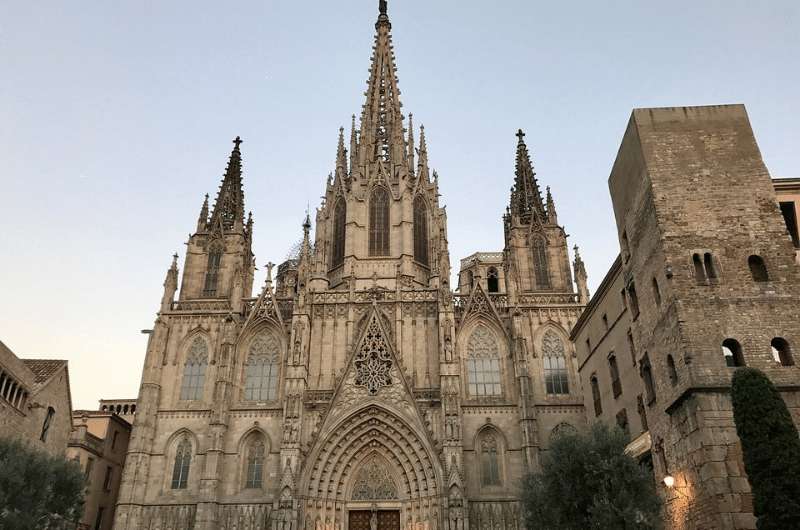
Barcelona Cathedral with a little bit of the Casa de l'Ardiaca on the right
Let’s start our walking tour by the Cathedral of Barcelona. It’s a Gothic cathedral that might not get the fame of the Sagrada Familia, but it is still an impressive cathedral. Very… dark and Gothic! Not as ornate as some others I’ve seen, a little spooky even. I was expecting Dracula to pop up and start playing the organ. And then bats would fly out with the first tones. (Visit Cordoba for another famous cathedral, or actually a mosque-cathedral hybrid.)
The façade is an addition from the 19th century, having replaced the plain one from the 14th century when a businessman finally came up with the funds for it. The façade follows the design in the sketches from the 13th century.
Tip: The Catalonia Catedral is a hotel right near the Cathedral so you can start this walk right from the door of your accommodation.
You can enter the cathedral and take a look around (don’t forget to take a peek into the courtyard with 13 geese), but the best part is the roof. Considering you still have a long walk ahead, your legs will appreciate the elevator that takes you to the roof. From there, take a look at the city you are about to walk through. Cool, right?!
Beware: No hats, short shorts or naked shoulders inside the cathedral! If you forget, you will be reminded.
- Plaza de la Seu
- Open weekdays 10:30 am–6:30 pm (no entrance after 6:00 pm), Saturdays 10:30 am–5 pm (no entrance after 4:30 pm), Sundays 8:30 am–1:45 pm and 5:15 pm–8:00 pm
- Tickets are €9 and include rooftop access and an audio guide.
Barcelona walking tour, day 1, stop 2: La Casa de l'Ardiaca
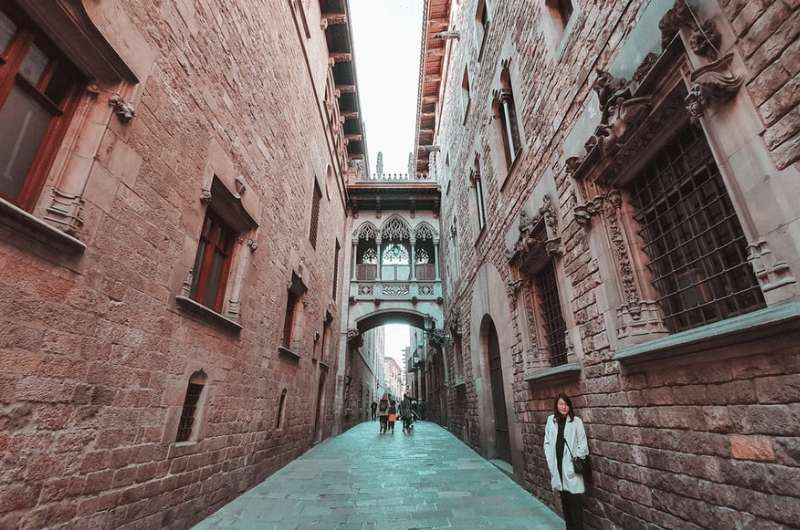
One of the little streets of the Gothic Quarter, Calle del Bisbe
Right in front of the cathedral is a smaller historical building, La Casa de l'Ardiaca, which houses the city archives. There is no entrance fee, and it only takes a little while to look around the small museum with changing exhibitions. Even if you skip the museum, go out the courtyard for a few minutes. It feels like you found a secret garden! Again, it’s small, but it’s got a fountain, some nice tile work, plus a really old palm tree. There’s also a nice view into the courtyard from the second floor. Extra points for you if you find the Medieval mailbox! Once you do, move on to your next stop on this walking tour.
- Carrer de Santa Llúcia, 1.
- Open daily except for Sundays, 9 am–8 pm.
- Free entry.
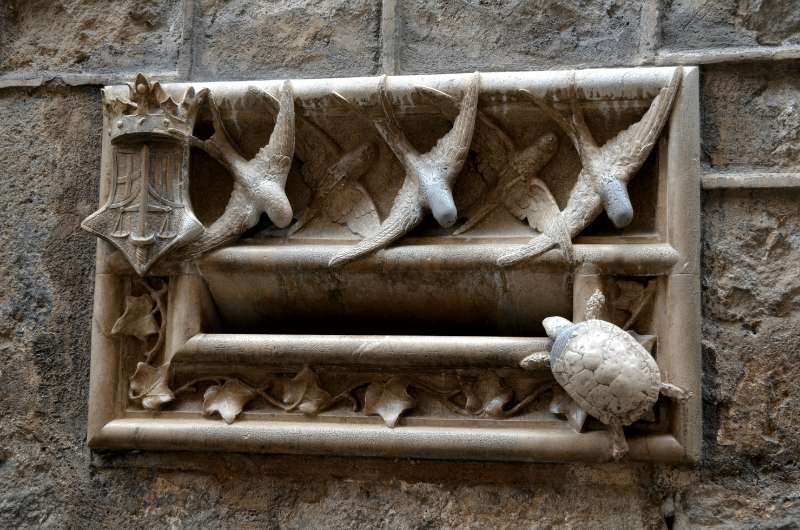
Medieval mailbox at the Casa de l'Ardiaca
Barcelona walking tour, day 1, stop 3: Streets around La Rambla
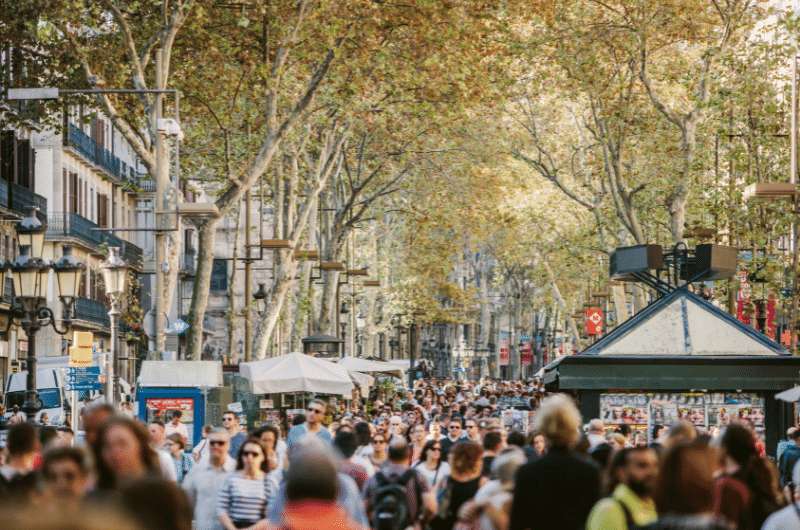
The opposite of a hidden gem: La Rambla street
Next, weave through the little side streets that lead out to the Gothic Quarter’s main street—La Rambla. If you’re like me and like charming little hidden niches, make sure to tuck in to Sant Felip Neri Square on the way. I can't say this is a must-see spot, but it's sort of an inevitable place that you'll find yourself on sooner or later.
La Rambla is the 1.4 km (1 mile) long tourist street of the Gothic Quarter. It’s a tree-lined promenade full of little shops and kiosks. So far, so good, right? But add street performers and crowds of visitors and you get a crowded traffic-jam of a street that made me feel like I was part of a cattle herd. Is this how they feel when they run the bulls in Pamplona? (You can read up on bull-related trivia in my very opinionated post on bullfighting.)
I’m not recommending La Rambla as something you have to do on your Barcelona trip, but you will probably do it anyway because it’s hard to avoid, being the main thoroughfare of the Old Town that will ultimately lead you to your next stop, Plaça de Catalunya.
This is more of a warning because despite the government setting up strict regulations on who can sell on La Rambla and how many kiosks is just the right number of kiosks, the street is just as touristy and overpriced as it sounds. Add a local pickpocket mafia and you have a reason to skip La Rambla altogether.
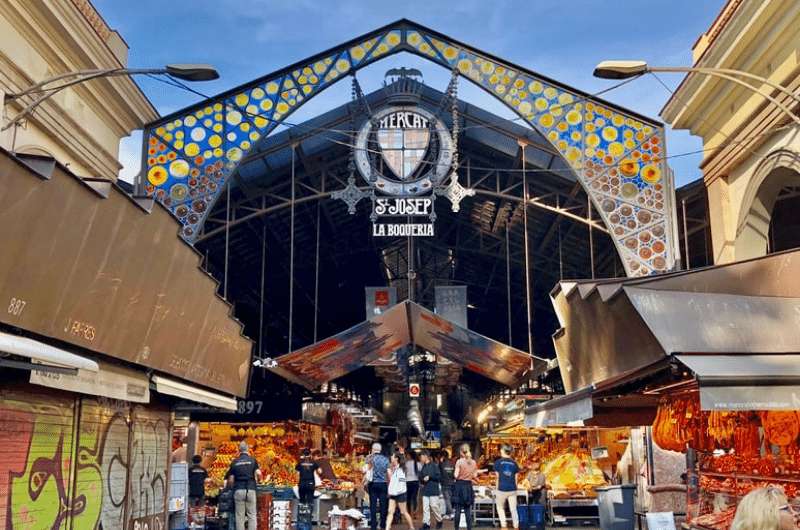
This way to the cones of jamon and cheese!
For a better shopping experience, head to the awesome public market called Mercado de La Boqueria. There you will be in food heaven. Even if you just browse, I find visiting a market is a great way to get a feel for a city. Before continuing your walk, grab a cheese and meat cone or a fruit salad from one of the many vendors.
If you just want food but not in a market setting, I recommend a tapas bar that we ate at that is very close to La Rambla, RAO Restaurant. It is one of the best tapas bars we found in Barcelona. Also, is it ever too early to have your first glass of cava, the Spanish sparkling wine? It comes in both white and rosé varieties.
Tip: If you’re a foodie, add Malaga to your tour of Spanish cities!
Barcelona walking tour, day 1, stop 4: Plaça de Catalunya
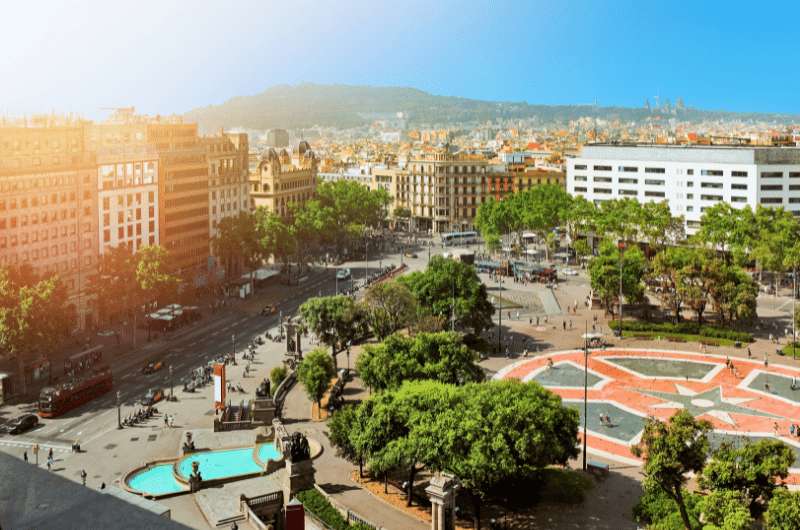
Plaça de Catalunya
If La Rambla is where the tourists gather, the large square at the northern end, Plaça de Catalunya, is where you’ll find the locals (and the flocks of pigeons).
It’s a whole different feeling being in such a wide, open space after exploring the little alleys of the Gothic Quarter. It’s where old Barcelona meets new Barcelona. Everything is suddenly bigger. Or maybe that’s just what it feels like since you now have a new sense of space.
The square is full of people in a hurry, people not in a hurry, people waiting for other people, cars, scooters, fountains, birds, statues and views of the beautiful buildings around it. It’s your first reminder that Barcelona is a bustling city.
And now it’s time to get your Gaudí on.
Our top tips for Barcelona:
- The best of Gaudí: Take the tour at Casa Batllo
- Beat the crowds: Buy your Park Güell tickets ahead of time
- Don’t miss it: La Sagrada Familia
Barcelona walking tour, day 1, stop 5: Casa Batlló
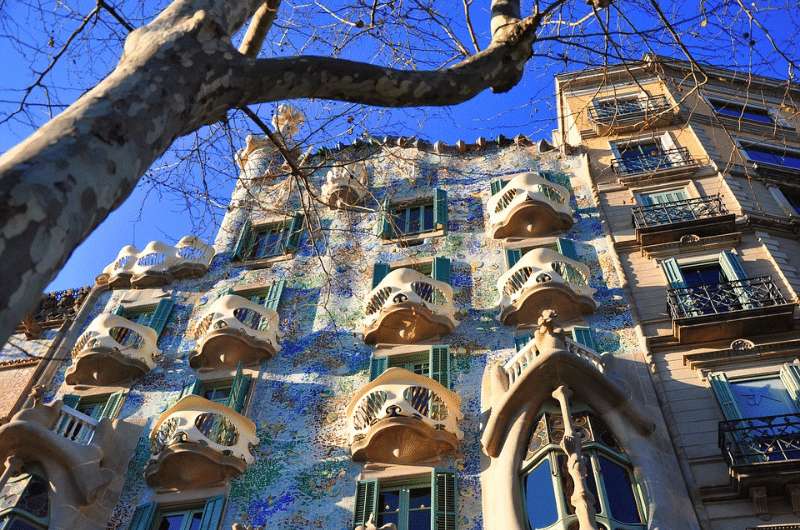
Our fave Gaudí building, Casa Batlló
Diagonally across the Plaça de Catalunya from La Rambla is your next street, the fashionable Passeig de Gràcia. But forget about shopping and look up. The street is lined with fantastic modern buildings mixed with historical ones, and it is where you’ll finally be able to try to comprehend Gaudi’s architecture. Also notice the lamp posts that were designed by architect Pere Falqués i Urpí.
Tip: The Sixtytwo Hotel is literally across the street from Casa Batlló and is a top spot to stay in Barcelona.
Casa Batlló is where you’ll want to hang out for a while. Bucket list, here I come! The roof is a dragon’s back, ok? The locals call it the house of bones because of how skeletal it looks. The facade is decorated with broken tiles, a gazillion of them, and the windows on the two bottom floors are oval... err, round... just weird-shaped, like something out of a fairy tale. The retro kind of fairy tale that has a lot of death in it.
But don’t just stand there, go inside! Don't skip it, this is a must-do. The interior is just as fascinating as the exterior and this self-guided tour is amazing. Seriously, I cannot recommend it highly enough. I can’t imagine what it was like inside Gaudí’s mind, but being inside Casa Batlló is the closest you will get to being inside his brain. It’s colorful, it’s outrageous, it’s all over the place. And I mean that literally, since in the last room there are projections on every surface and you are unconditionally immersed in it all.
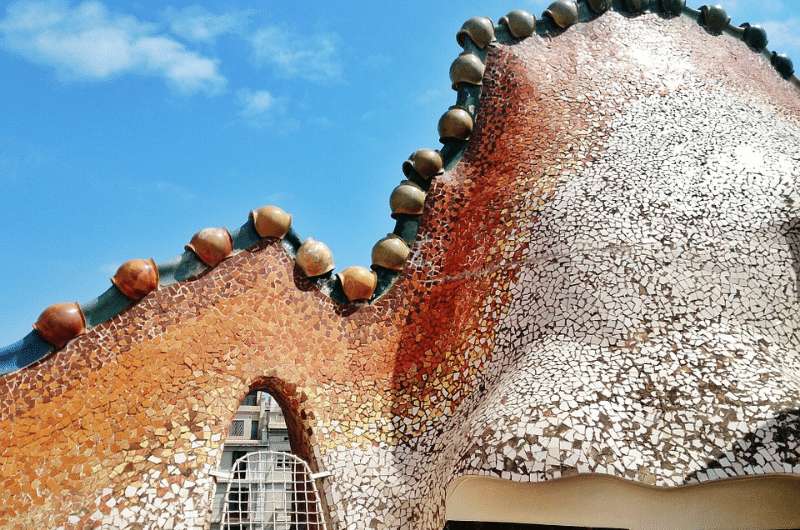
The dragon’s back
You also descend down into the basement and go up to the dragon roof, all while listening to the audio guide that is not the boring kind that you get in churches.
Set aside 1,5-2 hours for this tour.
- Casa Batlló, Passeig de Gràcia 43.
- Open Monday to Thursday 9am–6:30pm and Friday to Sunday 9am–8pm. Last admission is an hour before closing time.
- Tickets cost from €35 is you buy in advance online, which is recommended (you get a time slot). If you want to beat the crowds, buy the early bird ticket that lets you in before the official opening time (available online only).
Barcelona walking tour, day 1, stop 6: Casa Milà
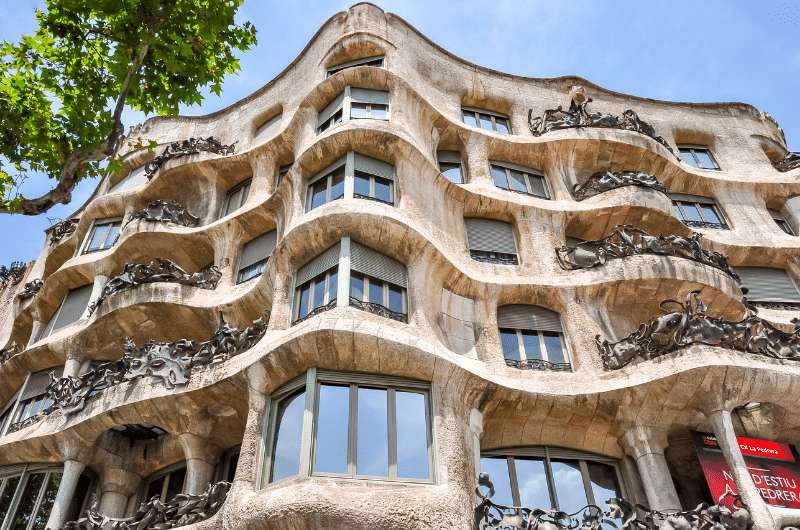
Casa Milà peculiar balconies
The stores get more and more high-end as you continue walking up Passeig de Gràcia. You pass Cartier, Prada, Versace and then voila, another Gaudí masterpiece, the Casa Milà stands before you.
This is the last private residence that Gaudí designed and is locally called La Pedrera or “the stone quarry”. When it was built, the locals hated it. This building isn’t as ornate as some of the other buildings he’s designed, but it’s still obviously Gaudí. It has a stone façade and twisted iron balconies. Compared to Casa Batlló it even looks a little boring.
What’s the word I’m looking for? Not beautiful… eerie? The Stone Quarry seems fitting.
Since you’ve already done the amazing tour of Casa Batlló, I’m not going to tell you to go inside Casa Milà. You would see the roof, which arguably is the most interesting of the building, but I don’t think it’s necessary. Just stare at the outside this time.
- Passeig de Gràcia 92.
- Open daily 9am–6:30pm.
- Tickets from €24 include audio guide.
Barcelona walking tour, day 1, stop 7: La Sagrada Familia
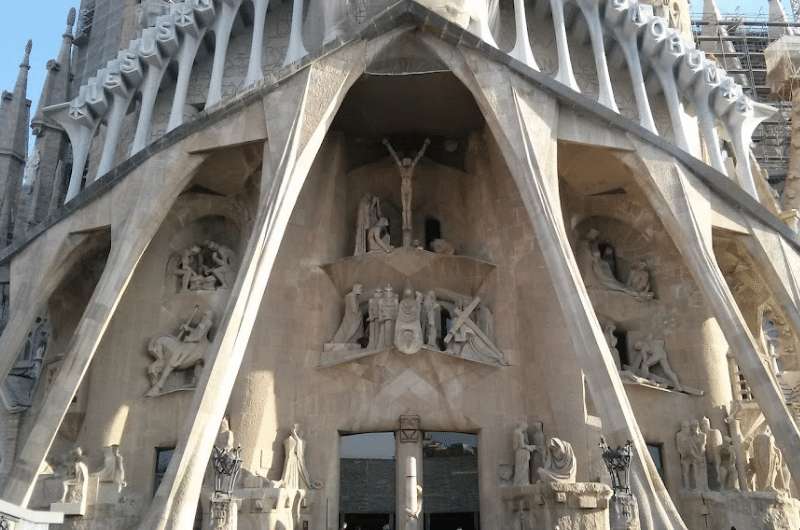
The unbelievable architecture of Sagrada Familia. Just imagine it without the cranes!
Get ready, it’s time to see the future tallest church in the world, the Sagrada Famillia. It’s still under construction after work started in 1882. Gaudí knew his generation wouldn’t see it finished. That’s why he asked that the most impressive front part gets built asap, so that his contemporaries (and him) could enjoy it before the end of their days.
Gaudí is buried in the crypt inside the basilica.
Walking towards Sagrada Familia, I was startled when I got to it. It isn’t in the middle of a huge square or anything, it’s just standing inconspicuously in an opening surrounded pretty closely by some busy Barcelonan streets. There’s even a Burger King right next to it. You’re walking, walking, walking and then BAM! La Sagrada Familia, the most fabulous church is humbly standing right in front of you.
You still won’t be able to take a picture of the basilica without the cranes that surround it, but come back in 10 years and maybe you’ll be lucky. The project is set to finish in 2026, but it's certain that work will continue even further.
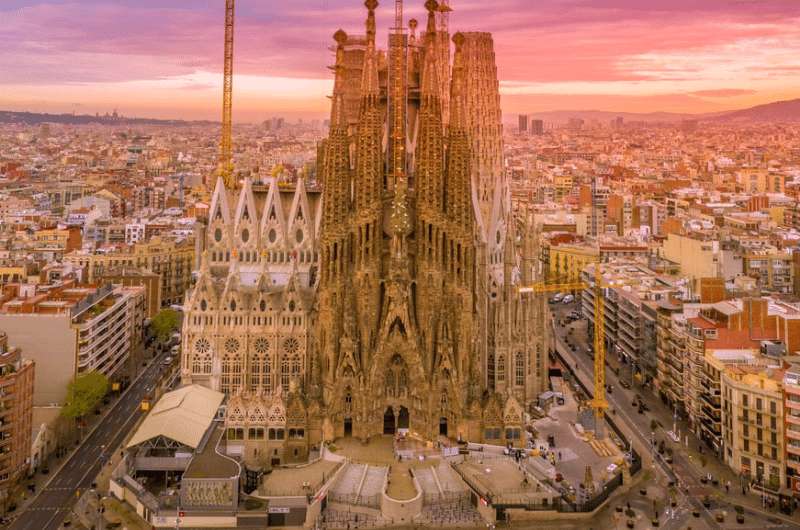
The strange details of Sagrada Familia
The exterior is striking, no doubt about that. But it’s the interior of the church that breaks the mold the most for me. It’s still churchy, but in a Gaudí way. Since he was heavily influenced by nature, the columns are shaped like tree trunks, making you feel like you’re in a fancy forest, not a church. Even the arches aren’t arched like you’d expect, it all looks very organic.
Tip: A comfortable hotel not far from the Sagrada Familia, complete with a rooftop pool, Hotel Barcelona 1882 is a great option for your stay.
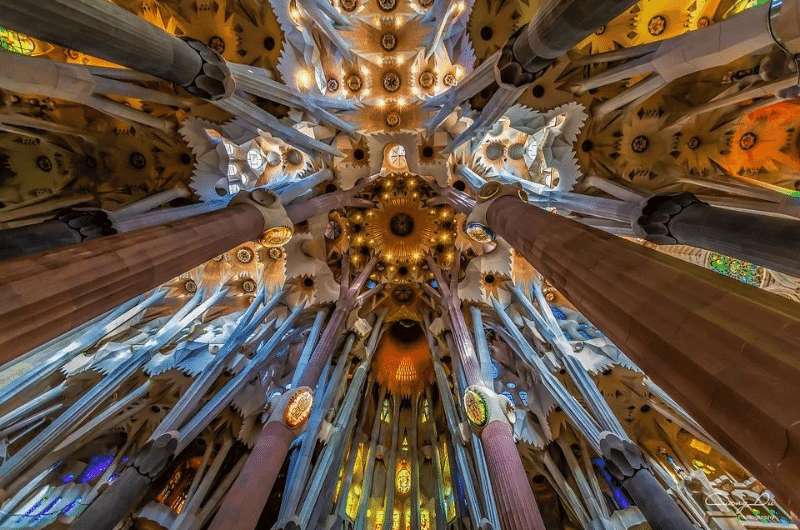
I can’t help it, I have to add another pic of Sagrada Familia. Wow!
Buy tickets online in advance. You can also get them at the door, but you will be asked to scan a QR code and get the app and buy them there, so save yourself the hassle and be ready beforehand. The audio guide is also in the app, so have it on your phone when you arrive.
- La Sagrada Familia, Calle de Mallorca 401.
- Open daily 9 am–6 pm.
- Tickets cost €26.
Barcelona walking tour, day 1, stop 8: Parc de la Ciutadella
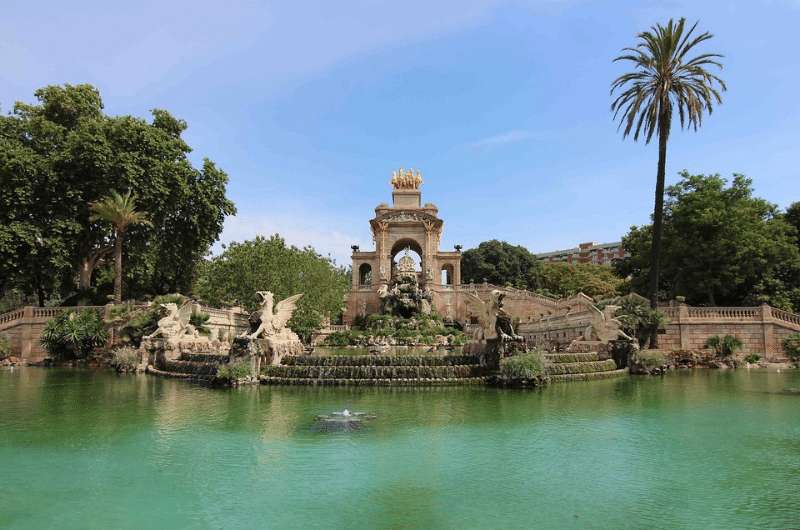
Cascada del Parc de la Ciutadella
After Sagrada Familia, I wouldn’t be surprised if you’ve had enough walking and sightseeing for the day. If you are done, you are done. But if you’re hopped up on Barcelona’s energy and want some more, make your way back down towards the sea and end your day there.
Head to Ciutadella Park, a green escape in the city. Enter through the large, red archway that used to be the entrance to the Expo of 1888, the Arco de Triunfo de Barcelona. The park is full of friendly parakeets that want to be fed and their squawking will be the soundtrack to your visit. If they see you feeding any of their comrades, they line up nearby and wait their turn, it’s hilarious.
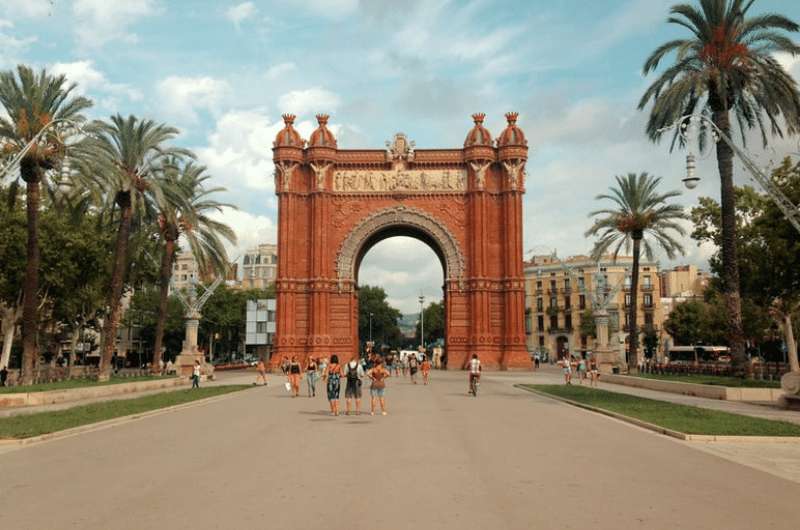
The Arco de Triunfo
But it’s the Cascada del Parc de la Ciutadella, a monument slash fountain, that’s the main draw of the park. It was designed by Josep Fontsére, but some contributions were made by Gaudí during his student years. It’s an elaborate piece complete with golden horses and dragons roaring into the lake.
Is the day coming to a close? Wander to Passeig del Born that’s towards the Old Town out of Ciutadella Park. It transforms into a party street after sunset. Consider Mercer Hotel or the adults-only Wittmore Hotel if you want to stay near the end of this tour.
If you’re up for some animal spotting, the Barcelona Zoo is part of this park as well.
After a good night’s rest at one of Barcelona’s fab hotels, you will continue your walking tour of the city with two more beautiful spots that are worth your attention.
Barcelona walking tour, day 2, stop 1: Park Güell
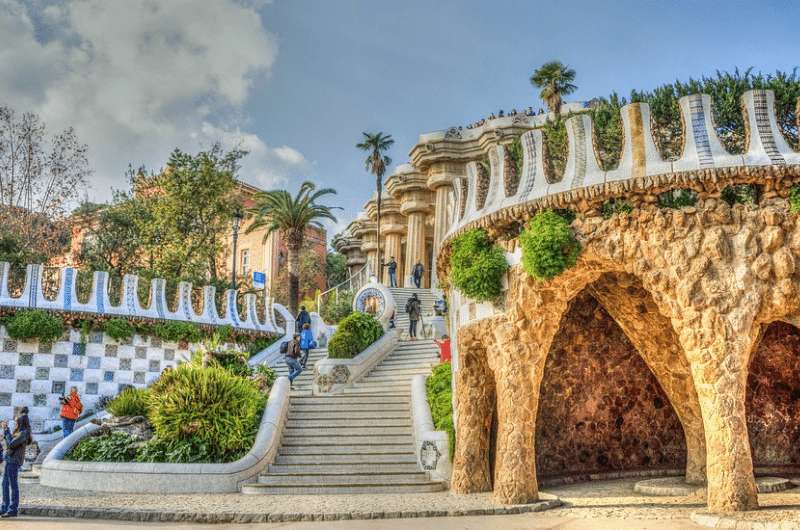
Park Güell can't be miss on your self-guided walking tour!
Who’s ready for more Gaudí? Honestly, if you’re not, you’ll be annoyed most of your time in Barcelona. This next stop is one of the most popular spots in the city called Park Güell. It reminded me of Charlie and the Chocolate Factory because it was this fantastical world of wonder. It’s my favorite park on the planet! Yes, I said it.
If Gaudí’s style is something you crave, this is a park full of it – the tiles, the colors, the melting, corner-less buildings. It’s a real treat, and I encourage you to wander aimlessly as much as you can in order to discover its hidden treasures. Take the odd stairway and see what you find. Since the park is above the city, you get some great views, too.
You could spend a day in this park, with fountains, a library, a bar, a playground and even a museum. You can also tour Gaudi’s house. But believe me when I say, just go and get lost. We found the most amazing little niches in very random spots throughout the park.
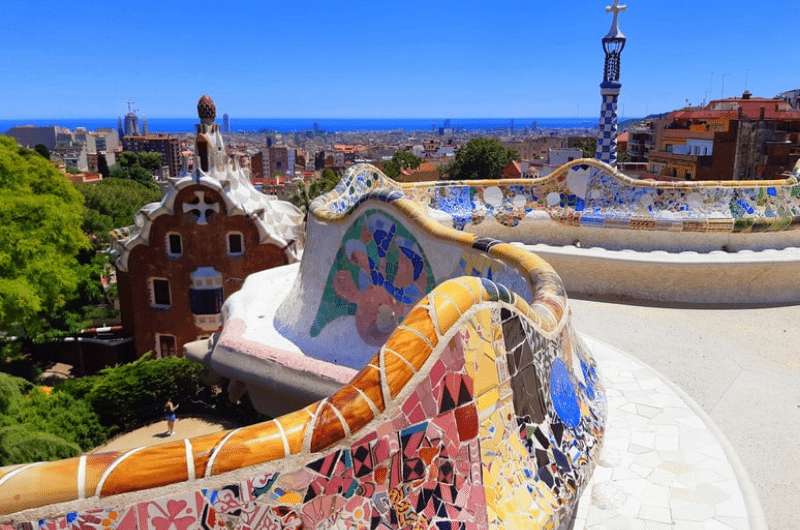
Just look at the details!
Most of the park is free to visit except for the “monumental zone”, which is near the Dragon Stairway entrance. Since you want to see the monumental zone, go ahead and start your walk here. It’s found roughly in the middle of Carrer d'Olot.
It’s best to get your ticket online beforehand because they only let in a certain amount of people at a time (to the monumental zone) and that might cause you to have to wait if you get there at a particularly busy time. So get your ticket, say hey to the dragon and start your wander. Make sure to get there no later than 30 minutes after your designated time to guarantee entry.
- Park Güell, Enter through middle of Carrer d'Olot.
- Open daily 9:30 am–5:30 pm (that’s the last entry time).
- Tickets are €10.
Barcelona walking tour, day 2, stop 2: Montjuïc Hill
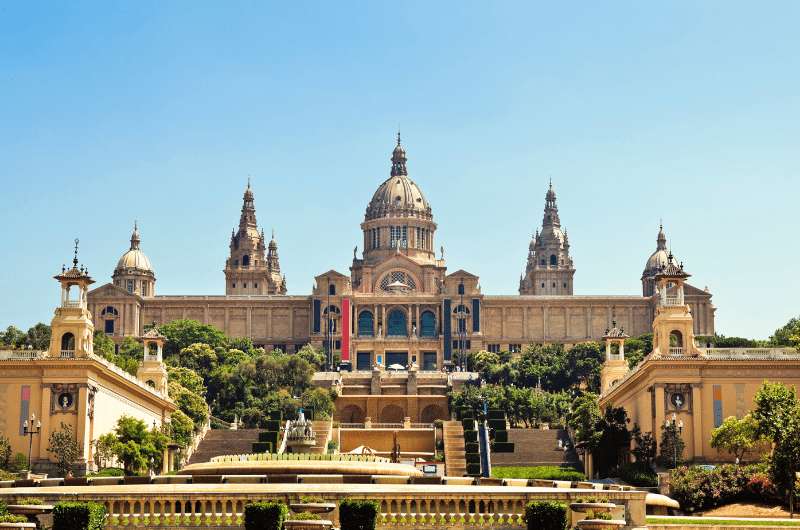
The National Museum (that is behind the Magic Fountain) reminded me of the Capitol building in Washinton DC
Another chance to see Barcelona from above is Montjuïc Hill, just southwest of the city center. Depending on how much you like walking around a park are, you could spend half a day here or just hit some of the main spots.
The first would be the Magic Fountain that honestly impressed me a lot more when the kitschy light show wasn’t on during the day, but if you want to Disneyland-esque magic, head out after sunset and take in the colors. Expect crowds. There is no entrance fee.
Tip: Stay at the stunning Hotel Brummell that’s right at the foot of the hill.
Behind the fountain is the National Museum of Catalan Art, which is an impressive building that reminded me of the Capitol building in Washington DC. Like a brown version of it. We didn’t visit it but just walking around made for a nice park of the walk.
If modern art is your thing, the Joan Miró Foundation is worth a visit. The exhibitions were really nice and the building is as modern as the art it shows.
- Joan Miró Foundation
- Closed Monday to Wednesday. Thursday to Sunday 10 am–6 pm.
- Tickets start at €16 for a general visit. You get a glass of cava with your ticket!
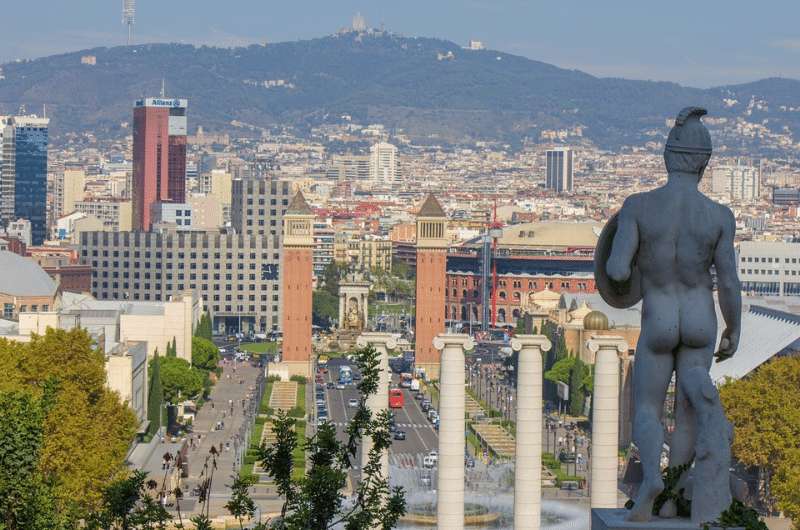
View from Montjuïc Hill: The perfect farewell from Barcelona
There are many gardens on Montjuïc and that was enough to keep us occupied for a couple of hours. You can walk as far as the fortress up top, where the views are stunning. (If you are a fan of fortresses, there are many amazing ones you can visit in Andalusia: the world-famous Alhambra in Granada or the Alcazar in Sevilla are my favorite palace-fortresses)
There, you did it! A self-guided tour of Barcelona that took you through the best places to see in the city in 2 days. Remember, if you're hungry for more Barcelona and the surrounding area, check out my 5-day Barcelona itinerary.
This post may contain affiliate links. We earn a small commission if you make bookings through my links, at no additional cost to you. Thank you for your support!
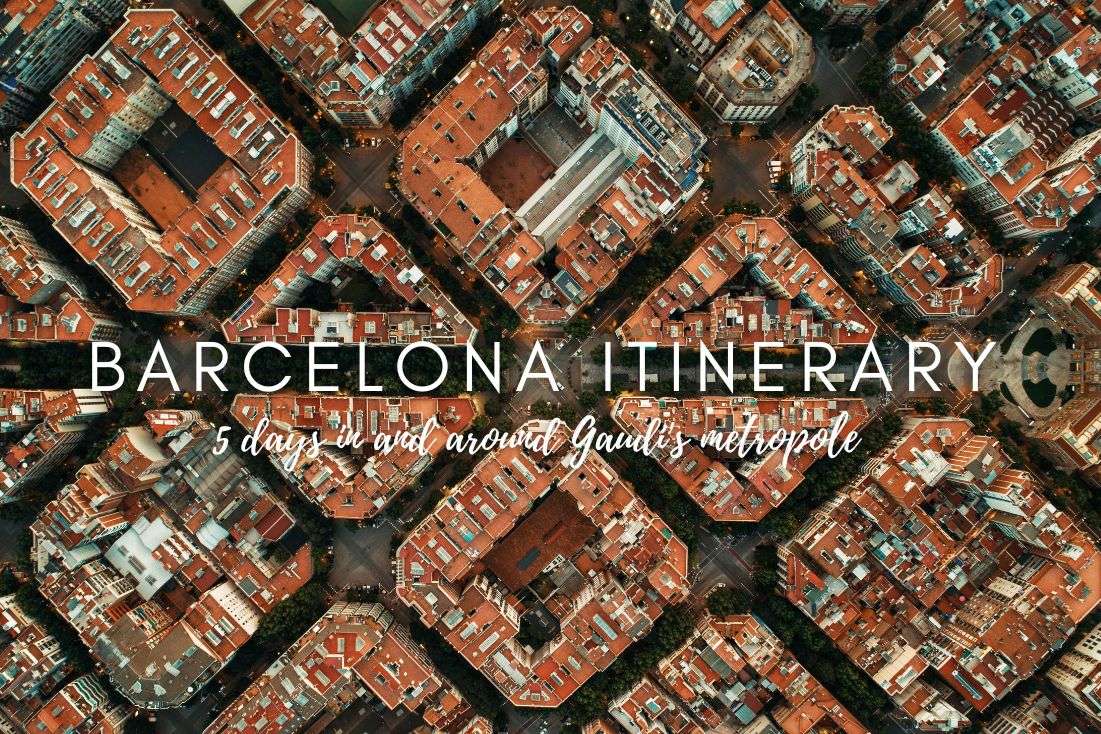

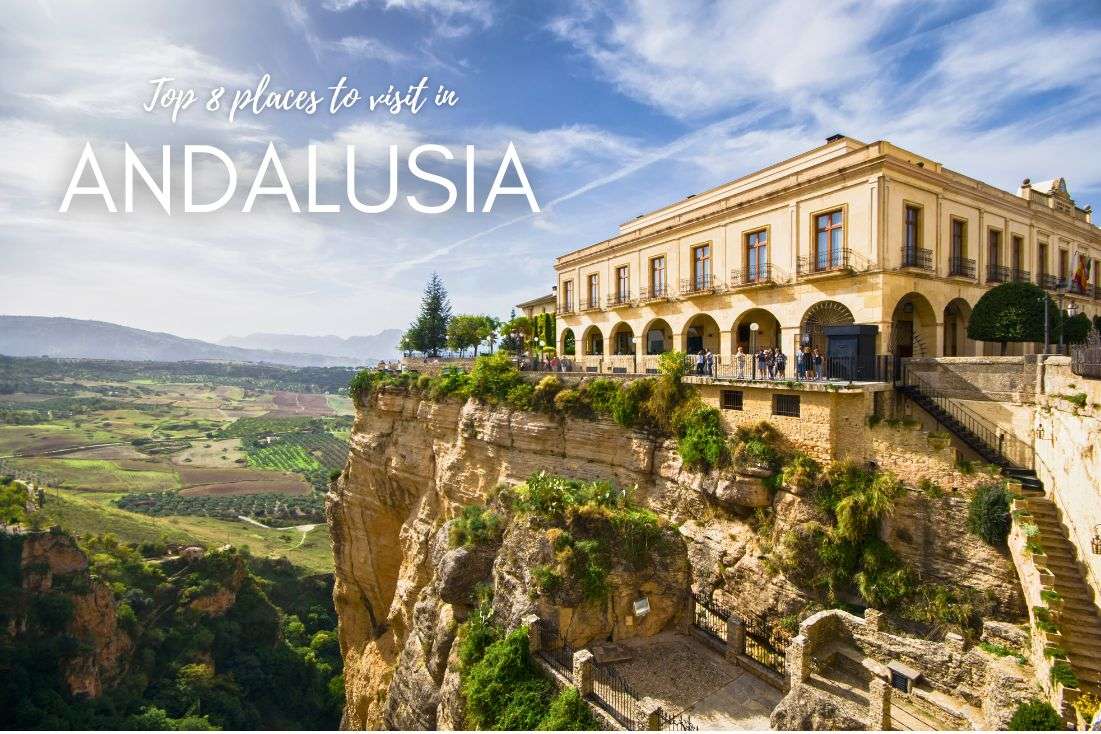




Comments
Thoughts? Give us a shout!